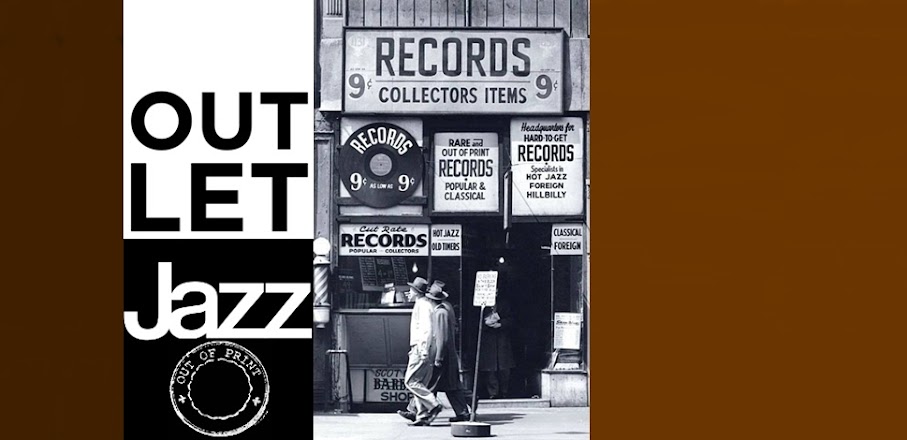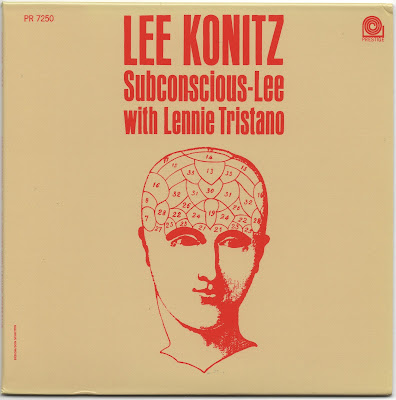Everybody knows that Gerry Mulligan is a saxophonist —most often to be heard on the baritone sax— but he’s also a pianist, a composer, an arranger and a bandleader. This album focuses on two important stages in the course of his career as an arranger. The first aspect is exemplified by four items which are representative of his manner in the late 40's, when he was only twenty years and worked for Gene Krupa and Elliot Lawrence. The following four pieces, so far unissued except for "Thruway", were recorded in the late 50's. by a big band an together by Gerry in New York.
Mullenium
In 1977, a long-lost Gerry Mulligan big-band session from 1957 was released for the first time. The four selections featured the baritonist's arrangements for a 15-piece group that included such notables as altoist Lee Konitz, Zoot Sims, and Charlie Rouse on tenors, and valve trombonist Bob Brookmeyer. To fill out the LP, two of Mulligan's vintage arrangements for the Gene Krupa Orchestra ("How High the Moon" and the hit "Disc Jockey Jump") from 1946-1947, and a pair of charts for Elliot Lawrence's big band ("Between the Devil and the Deep Blue Sea" and "Elevation") were reissued. On those titles, Mulligan only plays one solo; he is not even on the Krupa recordings, since he was much better-known as an arranger than as a player at the time. In 1998, all of the music from the album (which was titled The Arranger) was reissued on this CD, along with two alternates from the 1957 set and a newly discovered alternate take of "Disc Jockey Jump." The music overall (even the early titles) definitely has the good humor and swinging flavor of usually found in Mulligan's music, and even if it is not quite as essential as his most significant work, this CD is easily recommended to the baritonist's fans. *Scott Yanow*
Here is a well-drawn portrait of a multitalented artist —first as a young man, then as a figure of international stature. We encounter Gerry Mulligan —arranger/composer/pianist/clarinetist/prime mover of the "West Coast Jazz" of the early 1950's (and, of course, the definitive modern baritone saxophonist) as an ambitious 19-year old whose arrangements caught the ear of Swing drumming demigod Gene Krupa.
Krupa's exciting swing-to-bop band is heard playing a pair of Mulligan's charts, "How High The Moon" (whose chords were the basis of Charlie Parker's bebop
anthem, "Ornithology", and to whose line Mulligan’s pulsating arrangement alludes) and two takes of the "Four Brothers"-like "Disc Jockey Jump", a tune credited to Mulligan (1927-1996) and the leader. If you’ve ever seen Scorcese's wonderfully evocative but commercially-failed movie "New York, New York", these two cuts exemplify the kind of music favored by Robert DeNiro's selfabsorbed, tenor saxophone-playing main character.
Mullligan and bandleader-pianist Elliot Lawrence went back to their hometown days in Philadelphia. Like Krupa, Lawrence was impressed by Mulligan's ideas, but was more in tune with their modernist viewpoint. Significantly, it was during the period the two Lawrence selections ("Between The Devil And The Deep Blue Sea" and "Elevation") were recorded that Mulligan achieved his greatest successes up to that point. As a member of Miles Davis' nonet of young direction-setters, he wrote and arranged "Jeru", "Rocker", and "Venus De Milo" and arranged two other titles for the group’s watershed album, Birth Of The Cool.
Finally, we move forward to 1957, by which time Mulligan was almost a household name, thanks mostly to his pianoless early '50s quartet, featuring trumpeter Chet Baker. There are six performances by a 15-piece Mulligan-led orchestra, comprising a host of New York's first-call jazz and studio musicians. The corps of superb soloists includes tenor saxophonists Zoot Sims and Charlie Rouse, alto saxophonist Lee Konitz, valve trombonist Bob Brookmeyer, the under-appreciated, lyrical trumpeters Don Joseph and Jerry Lloyd, plus the leader on baritone saxophone and piano.
Mulligan's masterly voicings and contrapuntal writing are evident throughout, with "Motel" issued for the first time in complete form and all of the material, save for "Thruway", released for the first time in stereo.
This newly remixed and remastered edition of Mullenium includes previously unpublished photographs from the sessions, as well as new liner notes by respected arranger (and Mulligan authority). *Bill Kirchner*
Here's baritone saxophonist Gerry Mulligan as big–band conductor/composer/arranger/player with his own ensemble and others led by Elliot Lawrence and Gene Krupa. These radiant sessions, recorded between 1946–57, show that Gerry was comfortably at home in any setting from pianoless quartet to full–fledged orchestra (big bands, in fact, were his early proving ground) and serve as a touching reminder of how much was lost when he left us in January 1996 at age 69. When Gerry arranged "How High the Moon" for drummer Krupa's big band in 1946, he was barely 19 years old. That chart is here with two takes of "Disc Jockey Jump", written and arranged by Mulligan for the Krupa orchestra; his own "Elevation" and the standard "Between the Devil and the Deep Blue Sea", performed by Lawrence's ensemble; and six selections by Mulligan's orchestra from 1957 (not released until 1977) including three of Gerry's compositions, "Mullenium" and two takes each of "Thruway" and "Motel", alongside Jerome Kern's memorable standard, "All the Things You Are". The disc moves backward in time with the Mulligan ensemble first, followed by Lawrence (from 1949) and Krupa. Mulligan's orchestra, also for the most part pianoless (except for Gerry's occasional comping), was a platform for future superstars with names like Sims, Brookmeyer, Konitz, Rouse, McKusick and Rehak, all of whom are given solo space, with the irrepressible Zoot, at the top of his hard–swinging game, an exceptionally dynamic presence throughout (his shouting solo on track 6 is pure gold) while Konitz dances gracefully around Gerry's gruff baritone on "All the Things You Are" and Brookmeyer weighs in with several enterprising choruses. Drummer Bailey and bassist Benjamin aren't flashy but they get the job done. Sound quality on the Lawrence and Krupa tracks — none of which runs longer than 3:19 — is vastly inferior, with many a snap, crackle and pop, but there's more than enough wonderful music to counterbalance that shortcoming. I can still remember the impression "Disc Jockey Jump" made on me when I first heard it as a pre-teen (how's that for dating oneself?) and it's every bit as good as I remembered it to be. Mulligan was beyond question one of the finest big-band composer/arrangers of the modern era (bop and beyond), and this album definitely belongs in everyone's big-band library. *Jack Bowers*
1 - Thruway (take 6)
(Gerry Mulligan)
2 - Motel (take 5 )
(Gerry Mulligan)
3 - All The Things You Are
(O. Hammerstein II, J. Kern)
4 - Mullenium
(Gerry Mulligan)
5 - Thruway (take 7)
(Gerry Mulligan)
6 - Motel (take 4)
(Gerry Mulligan)
7 - Elevation
(Gerry Mulligan, Elliot Lawrence)
8 - Between The Devil And The Deep Blue Sea
(H. Arlen, T. Koehler)
9 - Disc Jockey Jump
(Gerry Mulligan)
10 - How High The Moon
(M. Lewis, N. Hamilton)
11 - Disc Jockey Jump (alternate take 1)
(Gerry Mulligan)
#1 to #6: Gerry Mulligan and His Orchestra
Gerry Mulligan (piano, baritone sax); Hal McKusic, Lee Konitz (alto saxophones); Zoot Sims, Charlie Rouse (tenor saxophones); Gene Allen (baritone sax); Phil Sumkel, Jerry Lloyd, Don Joseph, Don Ferrara (trumpets); Bob Brookmeyer (valve trombone); Frank rehak, Jim Dahl (trombones); Joe Benjamin (bass); Dave Bailey (drums).
Recorded at Colombia 30th Street Studio, New York, April 19 (#1, #4, #5) and April 20 (#2, #3, #6), 1957.
[Note: Mullenium's version here has an intro by Gerry on piano that is not featured on the LP "The Arranger"]
#7: Elliot Lawrence and His Orchestra
John Dee, Joe Techner, Jimmy Padget, Bill Danzizen (trumpets); Vince Forrest, Sy Berger, Chuck Harris (trombones); Joe Soldo, Louis Giamo (alto saxophones); Phil Urso, Bruno Rondinelli (tenor saxophones); Merle Bredwell (baritone sax); Bob Karsh (piano); Tom O'Neil (bass); Howie Mann (drums).
Recorded in New York, April 13, 1949.
#8: Elliot Lawrence and His Orchestra
John Dee, Joe Techner, Jimmy Padget, Bill Danzizen (trumpets); Frank Hunter, Gene Hessler, Sy Berger (trombones); Gerry Mulligan (alto and baritone sax); Joe Soldo (alto sax); Phil Urso, Bruno Rondinelli (tenor saxophones); Merle Bredwell (baritone sax); Elliot Lawrence (piano); Tom O'Neil (bass); Howie Mann (drums).
Recorded in New York, October 10, 1949.
#9 and #11: Gene Krupa and His Orchestra
Ray Triscari, Al Porcino, Ed Badgley, Don Fagerquist (trumpets); Clay Hervey, Dick Taylor, Emil Mazanec, Jack Zimmerman (trombones); Harry Terrill, Charlie Kennedy (alto saxophones); Buddy Wise, Mitch Melnick (tenor saxophones); Jack Schwartz (baritone sax), Buddy Neal (piano); Bob Lesher (guitar); Bob Strahl (bass); Gene Krupa (drums).
Recorded in New York, January 22, 1947.
#10: Gene Krupa and His Orchestra
Ray Triscari, Joe Triscari, Tony Anelli, Red Rodney (trumpets); Warren Covington, Carl Ziggy Elmer, Dick Taylor, Ben Seaman (trombones); Harry Terrill, Charlie Kennedy (alto saxophones); Charlie Ventura, Buddy Wise (tenor saxophones); Jack Schwartz (baritone sax), Teddy Napoleon (piano); Mike Triscari (guitar); Bob Munoz (bass); Gene Krupa (drums).
Recorded in New York, May 27, 1946.












